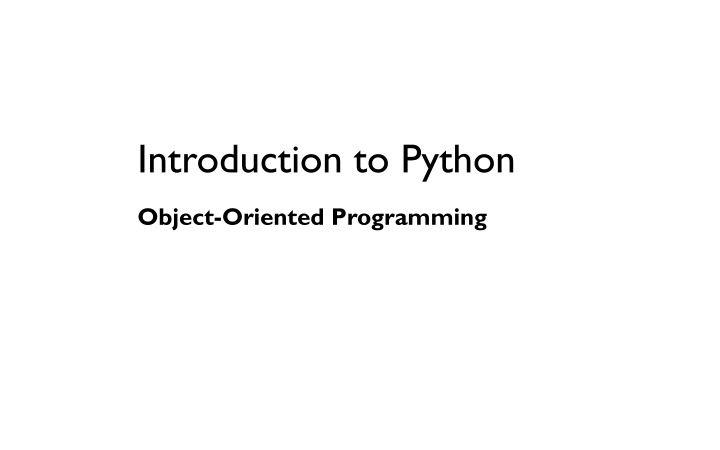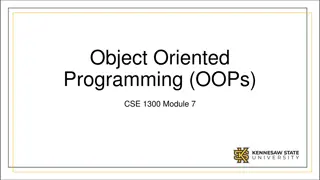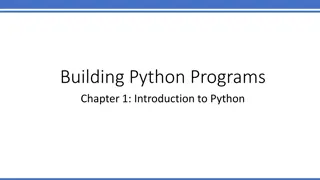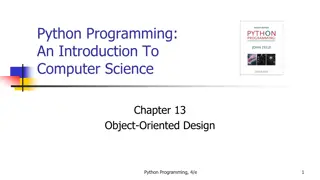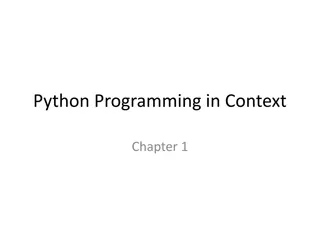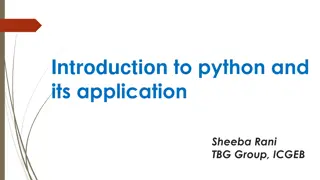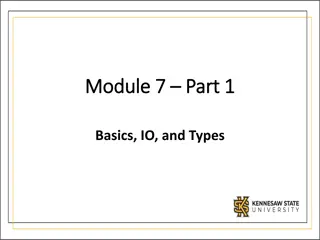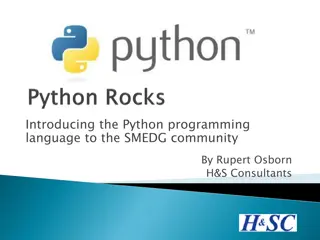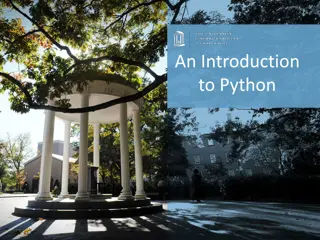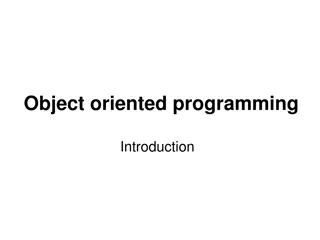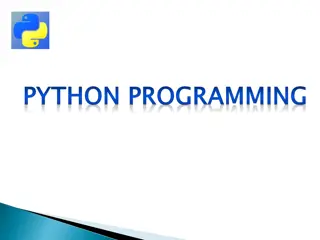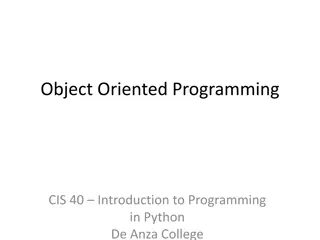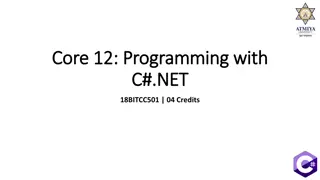Introduction to Python Object-Oriented Programming
Python Object-Oriented Programming is a paradigm that revolves around the concept of objects bundling data and functionality. This programming approach allows for the creation of classes, objects, methods, and more, enabling efficient data management and manipulation. Through examples and discussions on classes, objects, self, and more, learners can grasp the fundamental principles of object-oriented programming in Python.
Download Presentation

Please find below an Image/Link to download the presentation.
The content on the website is provided AS IS for your information and personal use only. It may not be sold, licensed, or shared on other websites without obtaining consent from the author.If you encounter any issues during the download, it is possible that the publisher has removed the file from their server.
You are allowed to download the files provided on this website for personal or commercial use, subject to the condition that they are used lawfully. All files are the property of their respective owners.
The content on the website is provided AS IS for your information and personal use only. It may not be sold, licensed, or shared on other websites without obtaining consent from the author.
E N D
Presentation Transcript
Introduction to Python Object-Oriented Programming
Topics 1) Classes 2) Class vs Object 3) __init__(dunder init) 4) Functions vs Methods 5) self 6) Importing modules
An Example So far, our data has been one piece of information: an int, a float, a string. If we have several pieces of information, we can use tuples to store all of the data: student = ( Mike Smith , 3.5) Tuples are often used to store static data: data that doesn t change in the course of the program. In a more complex setting, we might need to store data that does change throughout the program. We need a data type that: 1) store several pieces of data and 2) have the ability to manipulate or change that data.
An Example Suppose we are writing a program that manages a database of students. We need a data type that contains information about a student. A student has more than just one piece of information: name, age, id, address,list of courses, grades etc These collectively are the data of a student. A student might have some functionalities: ability to print personal information, add a course, update a grade., change their address, update school information, We like a data type that can bundle data and functionality into one variable. A class bundles together data (instance variables or attributes) and functionality (functions). From that class, we can create many objects of that class.
An Example of a class We'll discuss "self" later in the slides. class Student: def __init__(self, name, id): Class definition. self.name = name self.id = id This class Student can then be used to create multiple Student objects. def print_info(self): print(self.name, self.id) s1 = Student("Mike Smith", 34323) Each Student object has data(name, id) and functionality(print_info). s2 = Student("Sarah Jones", 67432) print(s1.name) # Mike Smith print(s2.name) # Sarah Jones print(s1.id) # 34323 s1.print_info() # Mike Smith 34323 To access data/functionality, the dot notation is used. s2.print_info() # Sarah Jones 67432
Class vs Objects A class bundles together data (instance variables or attributes) and functionality (methods). Thus, in the previous example, Student is a class and s1 and s2 are two of its objects.
OOP/OOD Object-Oriented Programming(OOP) is a programming paradigm based on the concepts of objects which bundles together data(in the form of instance variables) and functionality or behavior(in the form of functions or methods). Many popular languages are object-oriented(C++, Java, Javascript, Python). In OOP, programs are made up of many objects and a program run is the interaction of these objects.
Lab 1 Write the Student class which has two instance variables: name(str) and gpa(float). Write the average_gpa function which accepts a list of Student objects and returns the average gpa. Write the main method and: 1) Create a Student object and store it in a variable. Print out name and gpa of the Student object using the dot notation. 2) Create a list of three Student objects. Use a for loop to print out the names. 3) Call average_gpa and make sure it works by printing out the average gpa.
Lab 1 Modify the previous lab by putting Student class and the average gpa function in a different module(.py). Make the necessary import statement to make your code runs correctly.
References 1) Halterman, Richard. Fundamentals of Python Programming. Southern Adventist University.
